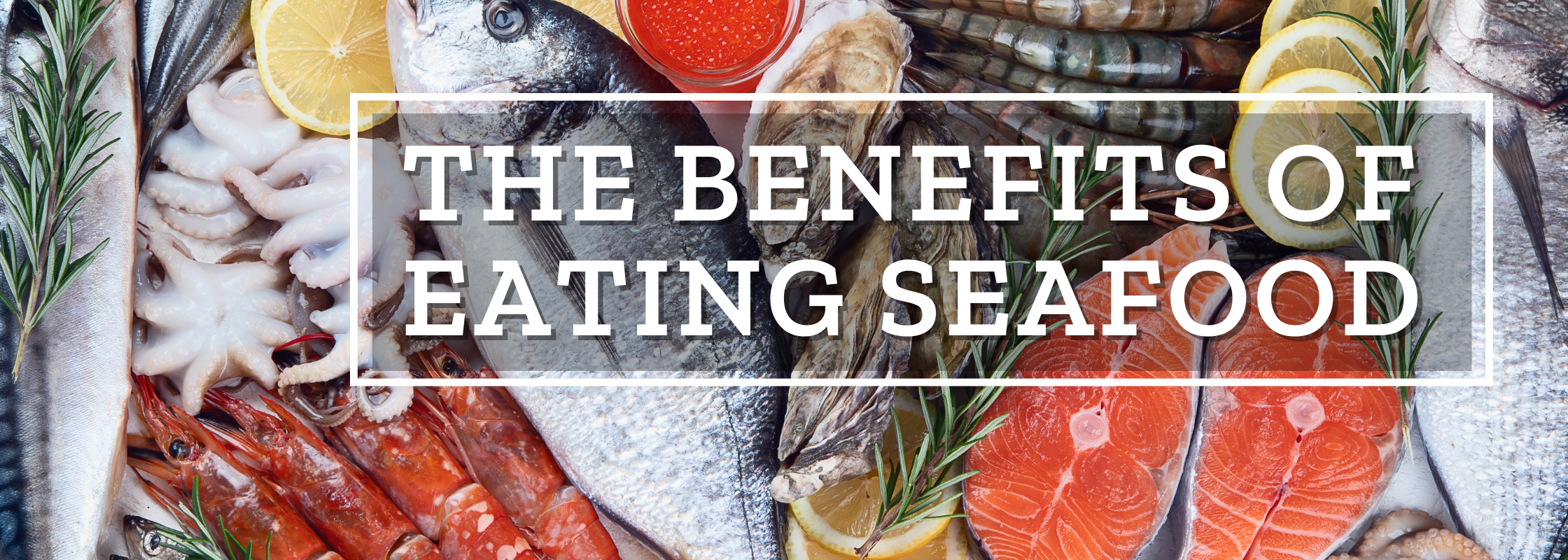Seafood is a great way to up your nutrition game and get the year started with healthy eating!
According to the FDA, Fish are part of a healthy eating pattern and provide key nutrients like; Omega-3 (called DHA and EPA) and omega-6 fats, iron, iodine, choline, and other nutrients like protein, zinc, vitamin B12, vitamin D, and selenium too.
The Dietary Guidelines for Americans recommends: A minimum of 8 ounces of seafood per week based on a 2,000 calorie diet. 2 to 3 servings a week is ideal, as a guide a serving is roughly the size of your palm.
The BEST seafood choices include: Anchovy, Catfish, Clams, Cod, Crab, Flounder, Haddock, Lobster, Oyster, Pollock, Salmon, Scallop, Shrimp, Smelt, Squid, Tilapia, Trout, and canned light Tuna.
Seafood is Part of a Balanced and Healthy Eating Pattern
Strong evidence shows that eating fish, as part of a healthy eating pattern, may have heart health benefits. Healthy eating patterns that include fish may have other benefits too.
Moderate scientific evidence shows that eating patterns relatively higher in fish but also in other foods, including vegetables, fruits, legumes, whole grains, low- or nonfat dairy, lean meats and poultry, nuts, and unsaturated vegetable oils, and lower in red and processed meats, sugar-sweetened foods and beverages, and refined grains are associated with bone health, healthy weight levels, and decreased risk of some cancers.
Learn More about Seafood at the FDA's Website
Cooking Fish the Healthy Way
The type of fish, cooking method, length of cooking time and cooking oil you use can all affect the nutrition profile of your fish. Overall, the healthiest cooking methods limit the loss of healthy fats, retain the most nutrients and minimize the formation of harmful compounds. In general, this means that sous vide, baking, steaming, and poaching your fish are your best bets. On the other hand, deep-frying fish is the least healthy cooking method.
- Sous Vide: Sous vide is a low-temperature cooking method. It may help preserve some of the healthy omega-3 fats in fish, as well as reduce the amounts of harmful compounds that can form during cooking.
- Baking: By baking your fish, you’ll likely lose less healthy omega-3 fats than if you fry or microwave it. Use minimal amounts of heat stable oil.
- Poaching and Steaming: Neither poaching nor steaming add oil or fat to the fish, so using these methods won’t add calories or change the fats in your fish they are low-temperature cooking methods that may preserve healthy omega-3 fatty acids better than other methods.
- Grilling and Broiling – Grilling and broiling fish can produce some harmful compounds. To minimize them, cook fish for the shortest time possible, avoid charring the flesh and add a marinade.
- Pan Frying – Frying can increase the amount of fat in your fish and negatively affect its ratio of omega-3 to omega-6 fatty acids. If you’re frying, pan-fry rather than deep-fry your fish, and use a healthy oil like olive oil.

